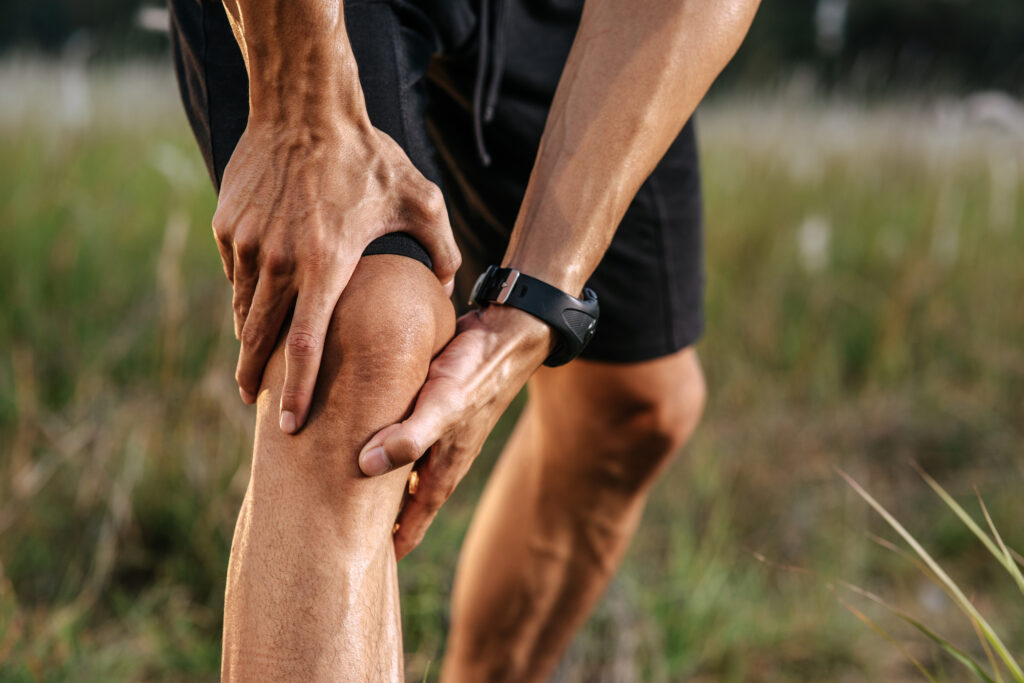If you're looking to enhance your flexibility, you might be surprised at how simple techniques can make a significant difference. Incorporating dynamic and static stretches into your routine can prepare your body for various activities while promoting overall mobility. Furthermore, integrating mindfulness practices can help you better connect with your body's needs. As you explore these approaches, you'll discover effective ways to improve your flexibility and perhaps even reveal new levels of physical performance. The benefits might be more profound than you expect, so let's take a closer look at what you can do.
Importance of Flexibility
Flexibility plays an essential role in your overall health and performance. It's not just about being able to touch your toes or perform complex yoga poses; it's about how your body functions day-to-day. Improved flexibility enhances your range of motion in joints, which can lead to better movement patterns in everyday activities. Whether you're reaching for something on a high shelf or bending down to tie your shoes, flexibility helps you move more freely and efficiently.
Moreover, flexibility contributes to injury prevention. When your muscles and joints are flexible, they can absorb impact better and withstand stress. This means you're less likely to strain or tear muscles during physical activities, whether you're lifting weights or playing sports. By incorporating flexibility training into your routine, you're actively working to reduce your risk of injuries.
Another significant aspect is how flexibility can improve your athletic performance. Increased flexibility allows you to execute movements with greater ease and power. For athletes, this can translate into improved speed, agility, and strength. You'll find that tasks like sprinting, jumping, or even swimming become more fluid and effective.
Lastly, flexibility has mental benefits too. Stretching and flexibility exercises can help reduce muscle tension and promote relaxation, which alleviates stress. This mind-body connection can enhance your overall well-being.
Dynamic Stretching Techniques
Dynamic stretching techniques are essential for preparing your body for activity.
Incorporating leg swings can enhance your mobility, while arm circles serve as an effective warm-up for your upper body.
Let's explore how these movements can improve your flexibility and performance.
Leg Swings for Mobility
Before you begin any intense workout or physical activity, incorporating leg swings can greatly enhance your mobility. This dynamic stretching technique effectively warms up your hip joints and increases blood flow to your lower body, preparing you for movement.
To perform leg swings, start by finding a sturdy support, like a wall or a railing. Stand next to it and hold on with one hand for balance. Begin by swinging one leg forward and backward, keeping your movements controlled. Aim for a range of motion that feels comfortable while gradually increasing the height of your swings. Switch legs after about 10 to 15 swings.
You can also try lateral leg swings for a different challenge. While facing your support, swing one leg side to side, crossing in front of your standing leg and then extending out to the side. Again, perform 10 to 15 swings before switching legs.
Leg swings can help improve flexibility and range of motion in your hips, making them an essential part of your warm-up routine.
You'll notice greater ease in your movements during workouts, allowing you to perform exercises with better form and efficiency.
Arm Circles for Warm-Up
Incorporating arm circles into your warm-up routine can greatly enhance your upper body mobility and prepare your shoulders for action. This dynamic stretching technique is simple yet effective, allowing you to loosen up those tight muscles and improve your range of motion.
To perform arm circles, stand tall with your feet shoulder-width apart. Extend your arms straight out to your sides, parallel to the ground. Start making small circles with your arms, gradually increasing the size of the circles. Do this for about 15-20 seconds, then switch directions and repeat. You'll feel the tension releasing from your shoulders and upper back, which is exactly what you want before diving into more strenuous exercises.
Remember to keep your movements controlled and focus on your breathing. If you notice any discomfort, ease up on the size of your circles.
Incorporating arm circles into your warm-up not only gets your blood flowing but also helps prevent injuries by preparing your muscles for the workout ahead. So, before you hit the gym or head out for a run, don't skip this essential step. Your shoulders will thank you!
Static Stretching Methods
Static stretching methods are essential for improving flexibility and promoting overall muscle health. These techniques involve holding stretches for a prolonged period, typically between 15 to 60 seconds, to lengthen the muscles and increase your range of motion. You can easily incorporate static stretches into your routine, whether as part of your warm-up or cool-down.
To get started, focus on major muscle groups like your hamstrings, quadriceps, and shoulders. For your hamstrings, sit on the floor with one leg extended and the other bent. Reach toward your toes on the extended leg, feeling the stretch in the back of your thigh. Remember to keep your back straight and avoid bouncing; this helps prevent injury.
Next, for your quadriceps, stand up and grab your ankle, pulling your heel towards your glutes. Keep your knees close together and push your hips slightly forward for a deeper stretch. Hold this position and breathe deeply for the best results.
Don't forget your upper body! For your shoulders, bring one arm across your body and use the opposite hand to gently press it closer to your chest. This stretch helps release tension and improves flexibility in your shoulders.
Lastly, always listen to your body. If you feel any pain, ease off the stretch. Consistency is key, so aim to incorporate these static stretching methods into your weekly routine, and you'll notice improvements in your flexibility and muscle health over time.
Incorporating Yoga Practices
Many people find that incorporating yoga practices into their routine can greatly enhance flexibility and overall well-being. Yoga combines physical postures, breathing exercises, and mindfulness, creating a holistic approach to improving flexibility. When you engage in regular yoga sessions, you're not just stretching your muscles; you're also promoting better circulation and reducing tension.
Start by integrating basic poses like Downward Dog, Cobra, and Child's Pose into your routine. These poses target various muscle groups and encourage greater range of motion. As you become comfortable, you can explore more advanced poses such as Pigeon Pose and Warrior II, which challenge your flexibility even further.
Don't forget to focus on your breath. Deep, controlled breathing helps you relax into each pose, allowing your muscles to release tension and stretch more effectively. Try to hold each pose for several breaths, gradually increasing the duration as your flexibility improves.
In addition to physical benefits, practicing yoga can enhance your mental focus and stress management. The mindfulness aspect of yoga encourages you to connect with your body, making it easier to listen to what it needs. This awareness can help prevent injuries and promote a more balanced approach to your fitness routine.
Consider setting aside dedicated time each week for yoga practice. Whether it's a class or a solo session at home, consistency is key. With patience and persistence, you'll likely notice significant improvements in your flexibility and overall health.
Foam Rolling Benefits
How can foam rolling transform your flexibility routine? It's a game changer when it comes to enhancing your mobility and easing muscle tension. By using a foam roller, you can target specific areas of tightness, helping to release knots and improve blood flow. This process, known as self-myofascial release, can greatly enhance your overall flexibility.
When you roll out your muscles, you're fundamentally breaking down adhesions and scar tissue that can form from injuries or prolonged inactivity. This not only helps in reducing soreness after workouts but also prepares your muscles for deeper stretches. You'll find that after foam rolling, your body feels more open, allowing you to achieve better positions during your flexibility training.
Incorporating foam rolling into your routine isn't time-consuming. Just a few minutes before or after your workouts can yield substantial benefits. You'll notice that rolling out muscles like your quads, hamstrings, and calves can help you achieve a greater range of motion.
Plus, it can act as a form of active recovery, keeping your muscles supple and ready for the next workout.
Lastly, foam rolling can be a mindful practice. It encourages you to tune into your body, identifying areas of tension that may need extra attention. So, grab your foam roller and make it an important part of your flexibility routine. The benefits you'll experience in your mobility and muscle recovery will keep you coming back for more.
Daily Mobility Routines
Incorporating daily mobility routines into your life can greatly enhance your overall flexibility and movement quality. By dedicating just a few minutes each day, you can improve your joints' range of motion, reduce muscle stiffness, and prevent injuries.
Start your routine with dynamic stretches that engage multiple muscle groups. For example, arm circles, leg swings, and torso twists warm up your body and increase blood flow.
Next, focus on specific areas that may feel tight or restricted. Spend time on your hips, shoulders, and back, as these areas often hold tension. Try movements like deep lunges, cat-cow stretches, and shoulder dislocates. Holding each stretch for 15-30 seconds allows your muscles to gradually lengthen.
Incorporate mobility drills that mimic daily activities. For instance, perform ankle circles and hip openers to enhance your ability to squat or lunge. You can also use tools like resistance bands or a foam roller to assist in your routine. These tools can provide additional support and help target those tricky knots.
Consistency is key, so aim for a routine that fits seamlessly into your day. Whether it's a morning ritual or a post-work session, find a time that works best for you.
Over time, you'll notice improvements not just in flexibility but also in your overall movement efficiency. Remember, a little effort each day can lead to significant gains in your mobility and quality of life.
Breathing Exercises for Flexibility
Your breath plays an essential role in enhancing flexibility and overall movement. By practicing specific breathing exercises, you can reveal your body's potential, allowing for deeper stretches and improved mobility. When you focus on your breath, you create a mind-body connection that facilitates relaxation and reduces tension in your muscles.
Start with diaphragmatic breathing. Sit or lie down comfortably, placing one hand on your chest and the other on your abdomen. Inhale deeply through your nose, allowing your abdomen to rise while keeping your chest relatively still. Exhale slowly through your mouth. This type of breathing encourages full oxygen exchange, which helps your muscles relax and promotes flexibility.
Next, try the 4-7-8 breathing technique. Inhale for a count of four, hold your breath for seven counts, and exhale for eight. This technique not only calms your mind but also helps release tightness in your body. Use this method before starting any flexibility routine to create a relaxed state.
Incorporating breath with movement can further enhance flexibility. As you enter a stretch, inhale deeply to prepare your body, and exhale as you sink deeper into the position. This synchronization helps you ease into stretches, allowing your muscles to release tension and improve their range of motion.
Tips for Consistency
While it's easy to feel motivated at the start of your flexibility journey, maintaining consistency is essential for long-term progress. To achieve this, set a specific schedule for your stretching sessions. Whether it's three times a week or daily, having designated times helps you stay on track. Make it part of your routine, just like brushing your teeth or exercising.
Next, create a comfortable space where you can focus on your flexibility. This doesn't have to be a fancy gym; just find a quiet corner at home with enough room to stretch. Having a dedicated spot will mentally prepare you to engage in your practice.
You should also track your progress. Keeping a journal or using an app can motivate you by showing how far you've come. Note your improvements, whether that's holding a stretch longer or reaching a new depth. Celebrate these small victories.
Another tip is to mix up your routine. Variety keeps things interesting, so try different stretches, yoga classes, or even dance. Not only will this prevent boredom, but it'll also help you develop well-rounded flexibility.
Finally, find a buddy or community to join you. Having someone to stretch with can boost your commitment and make the journey more enjoyable.
Conclusion
Incorporating these simple techniques into your routine can greatly enhance your flexibility. By blending dynamic and static stretching, yoga practices, and foam rolling, you'll keep your muscles supple and ready for action. Don't forget the power of daily mobility routines and mindful breathing exercises to deepen your practice. Stay consistent, and you'll see improvements in no time. Remember, flexibility is a journey, and with dedication, you can achieve greater range of motion and overall well-being.



